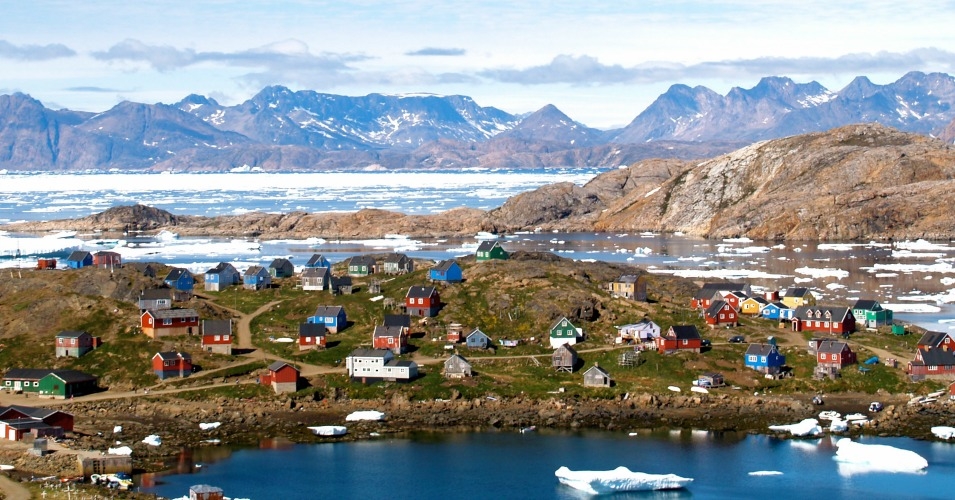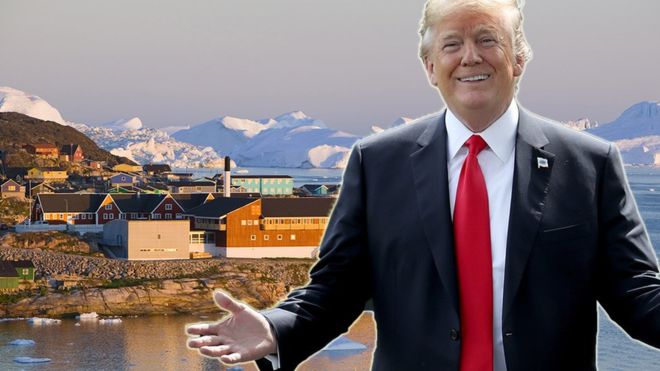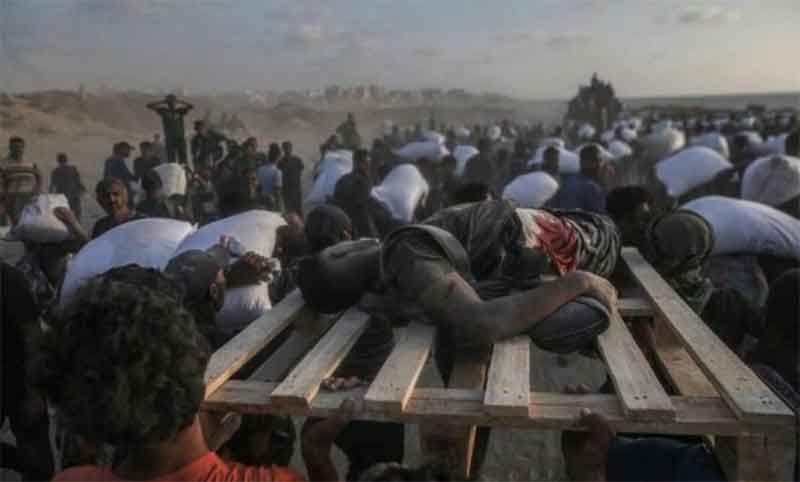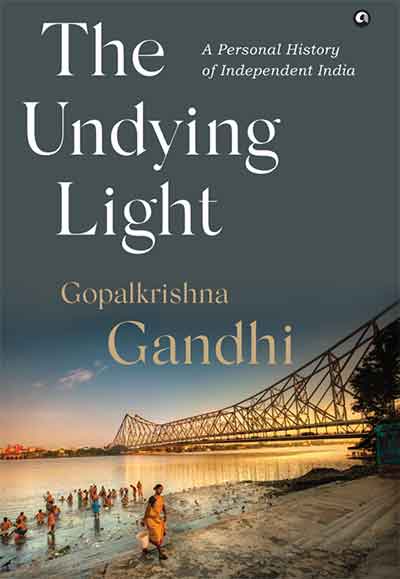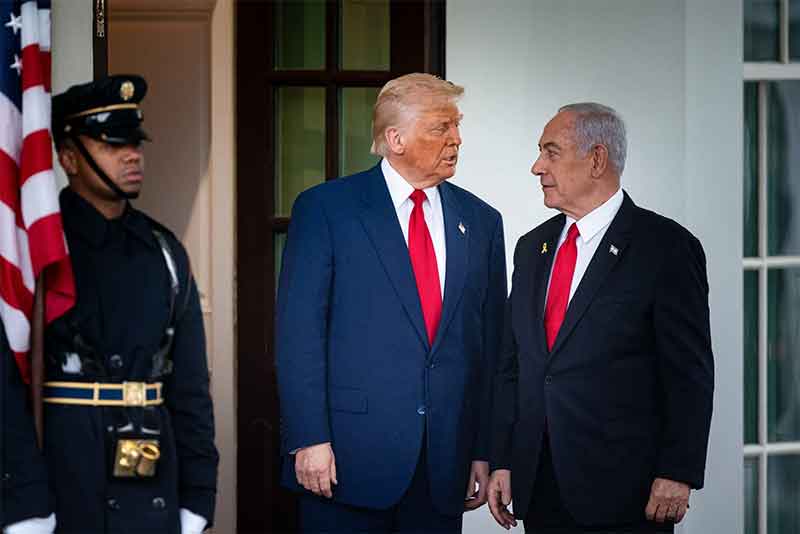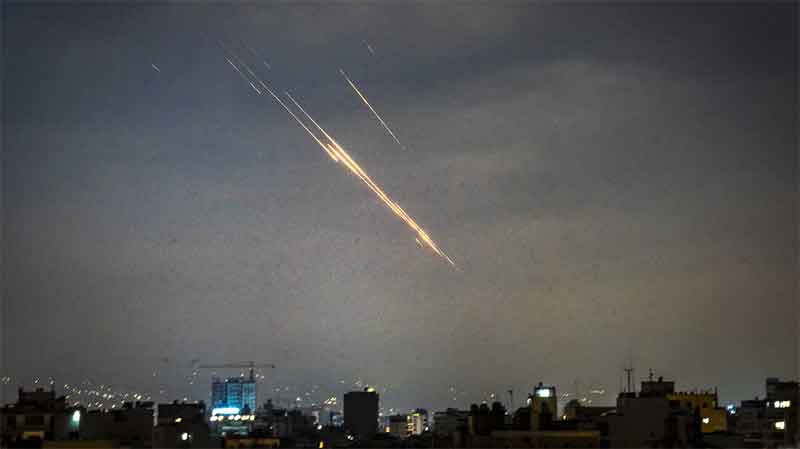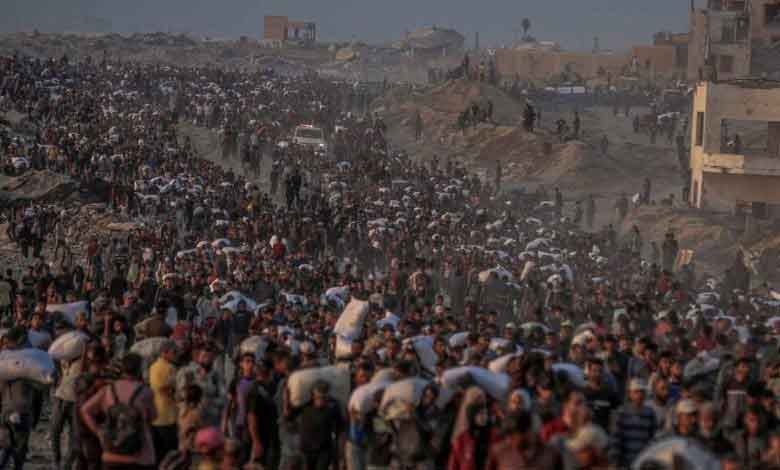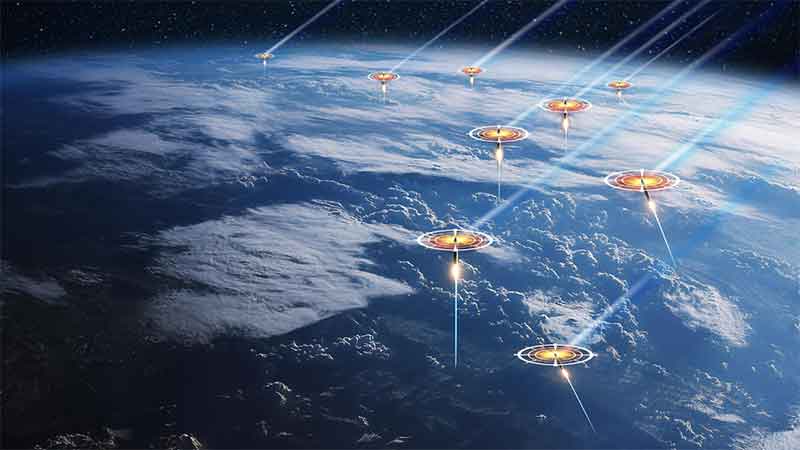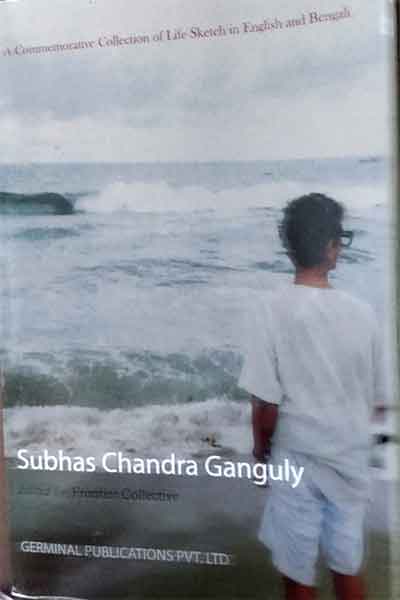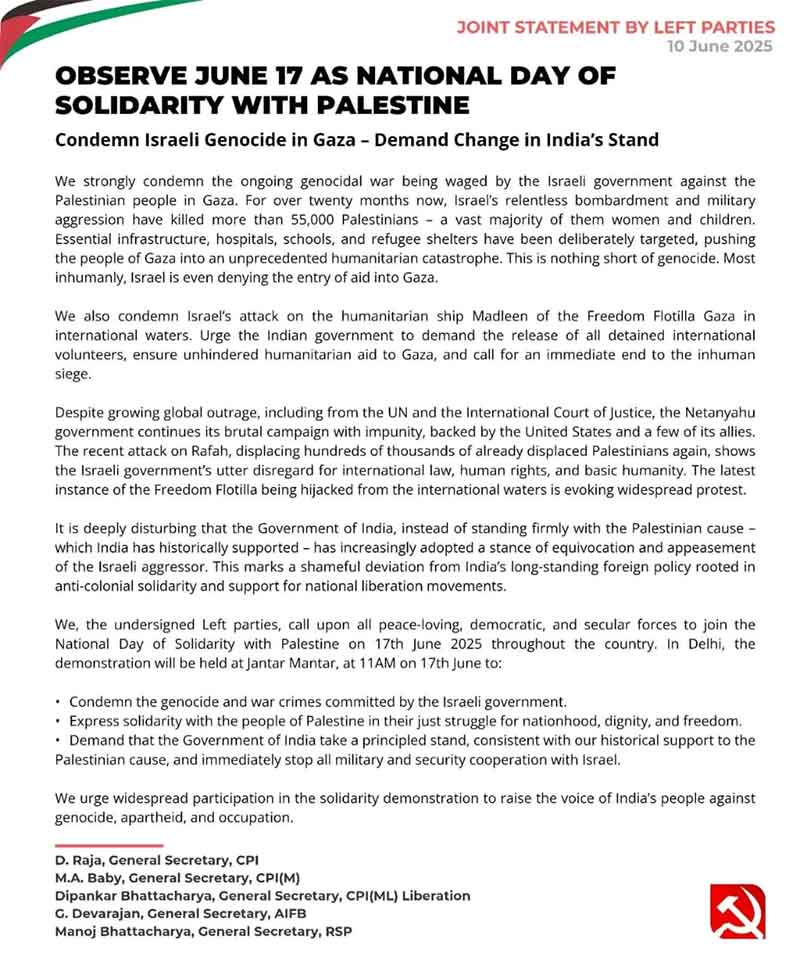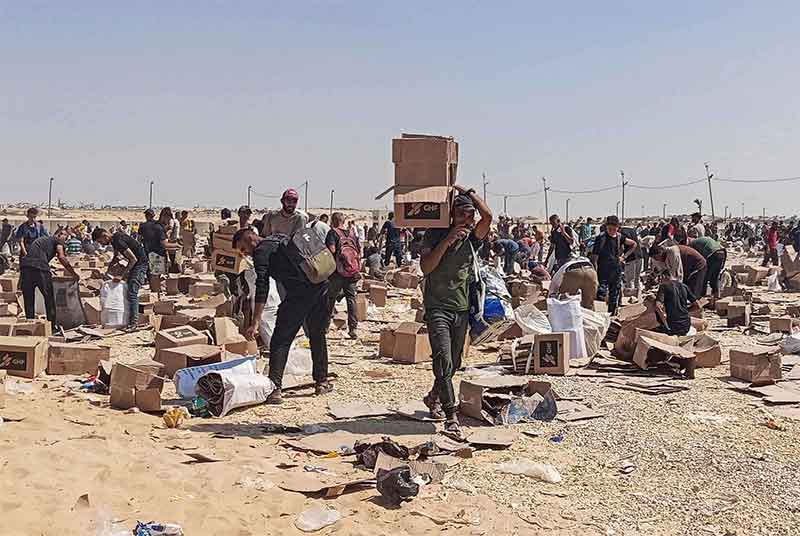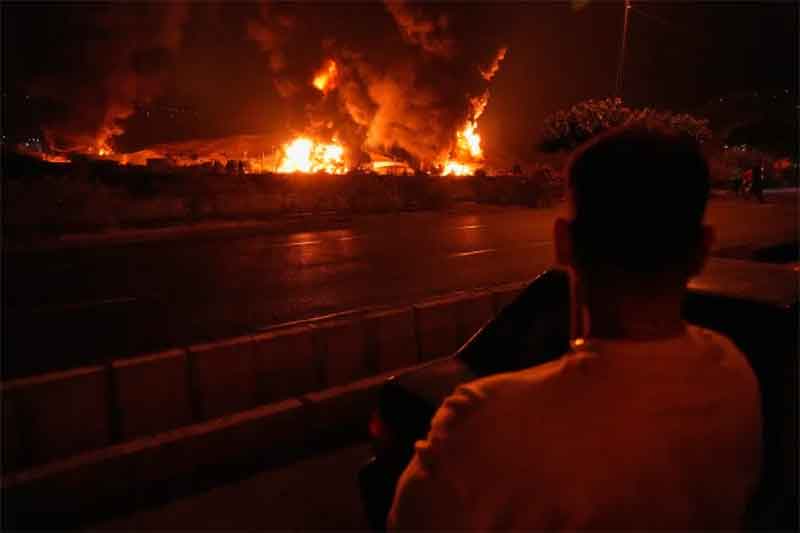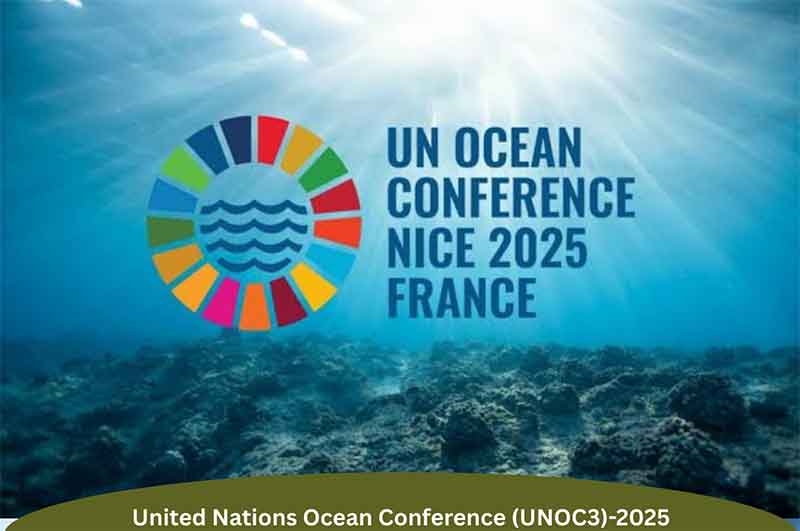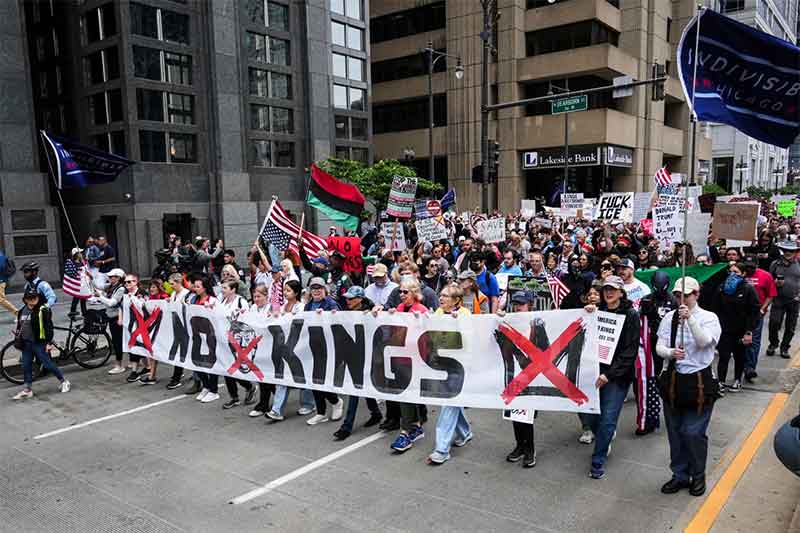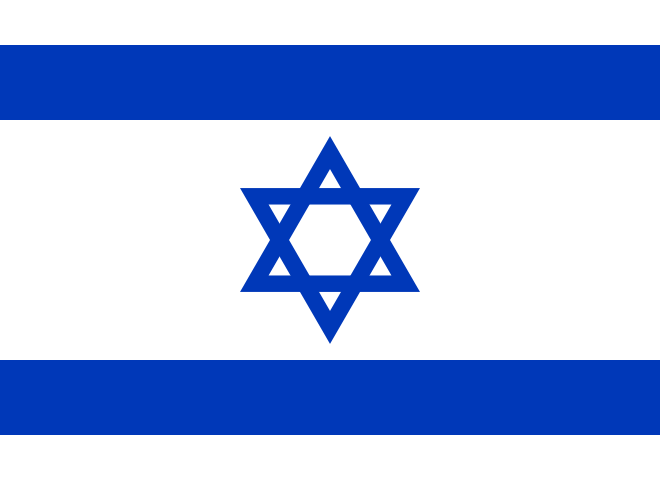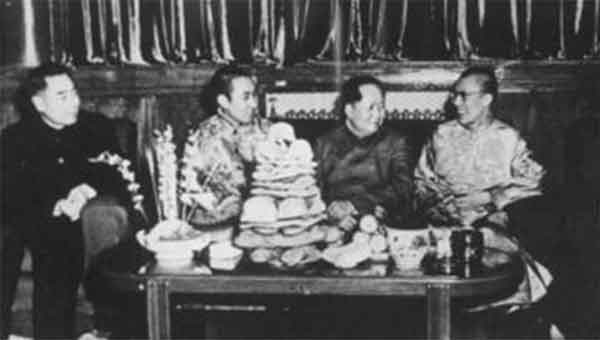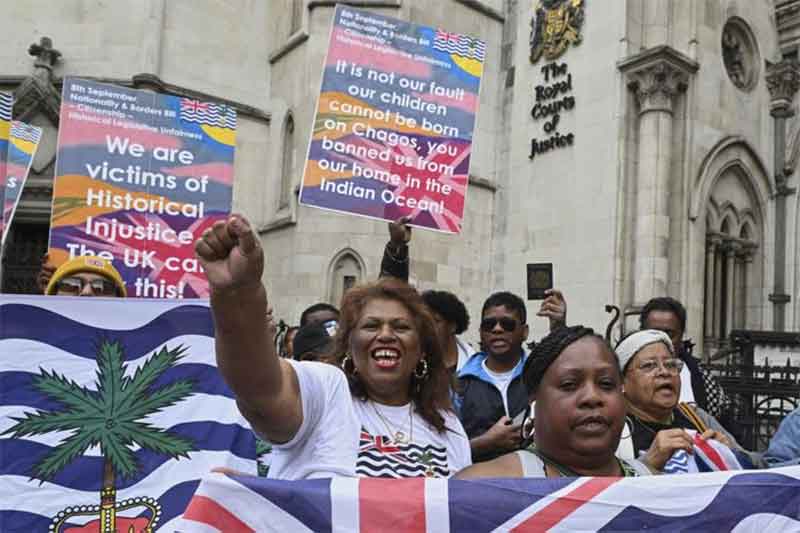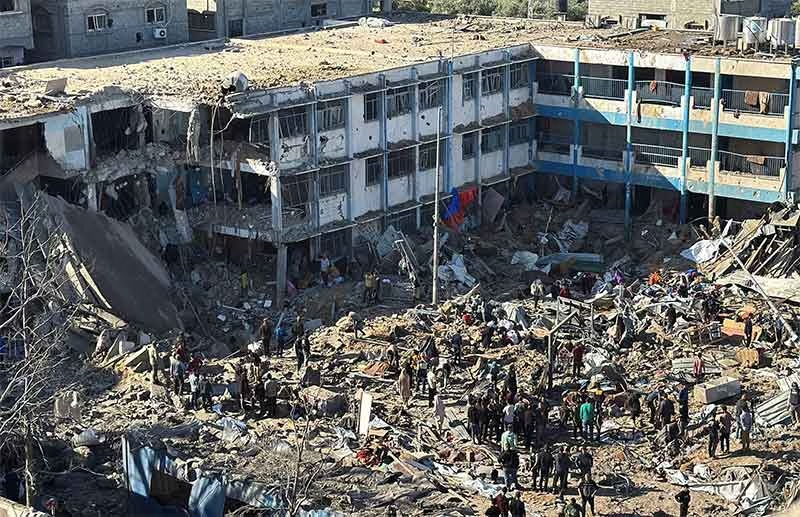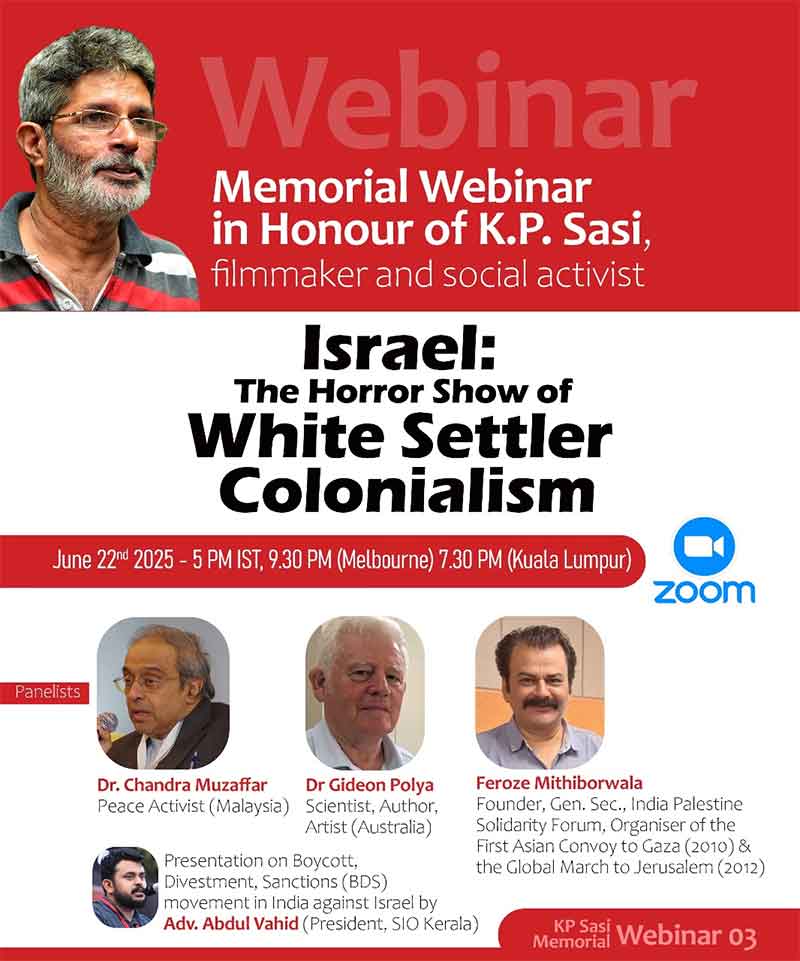
United States vice president JD Vance traveled to Kalaallit Nunaat (colonial designation: Greenland) to join his wife. He issued a statement that speaks much to the imperialist mindset of the Trump administration:
I’m going to visit some of our guardians in the Space Force on the northwest coast of Greenland and also just check out what is going on with the security there of Greenland. As you know, it is really important: a lot of other countries have threatened Greenland and threatened to use its territories and its waterways to threaten the United States, to threaten Canada and of course to threaten the people of Greenland, so we’re going to check out how things are going there. So speaking for President Trump, we want to reinvigorate the security of the people of Greenland because we think it is important to protecting the security of the entire world. Unfortunately, leaders in both America and in Denmark I think ignored Greenland for far too long. That has been bad for Greenland. That has also been bad for the security of the entire world. We think we can take things in a different direction, so I am going to go check it out.
Vance says a lot of other countries have threatened Greenland (and Canada and the US). Trump points to Russia and China as threats to Greenland, without any evidence to back it up. It comes across clearly as blatant fearmongering, conjuring up a boogeyman and presenting the US as coming to the rescue.
Do Greenlanders feel afraid? If Canadians are afraid, it is about the threats the US made against Canadian sovereignty. A poll reveals that Canadians feel angry (57%), betrayed (37%), and anxious (29%) toward the Trump administration.
However, it is just silly to think Russia and China would risk world opprobrium to take over the world’s largest island, and for what? Resources and commodities that they can get by trading?
But there is a country that threatens Greenland.
Trump said to Greenland,
We strongly support your right to determine your own future. And if you choose, to welcome you into the United States of America. We need Greenland for national security and even international security. We’re working with everybody involved to try and get it. But we need it really for international world security. And I think we are going to get it; one way or the other we are going to get it. [people can be heard laughing and booing] We will keep you safe. We will make you rich …
Trump is clearly speaking out both sides of his mouth, saying he respects Greenlanders right to self-determination and then making threatening comments that the US “one way or the other we are going to get it.”
Denmark’s prime minister Mette Frederiksen complained that the US is putting “unacceptable pressure” on Greenland and Denmark. During a DR broadcast, she stated, “It is pressure that we will resist.”
Former Greenland prime minister Múte Egede realizes that the US dream to annex, own, and control Greenland is serious and calls upon allied countries to declare their support for Greenland.
Jens-Frederik Nielsen who was sworn in as the prime minister of Greenland on Friday, 28 March responded to Trump: “President Trump says that the United States is getting Greenland. Let me be clear: the United States won’t get that. We do not belong to anyone else. We determine our own future.”
On Saturday, 29 March, Trump responded about the potential use of force to take over Greenland: “I never take military force off the table. But I think there is a good chance that we could do it without military force.”
Vance and Trump Criticize Denmark
Vance criticized Denmark: “Denmark has not kept pace and devoted the resources necessary to keep this base, to keep our troops, and in my view, to keep the people of Greenland safe from a lot of very aggressive incursions from Russia, from China and other nations.” Trump echoes that sentiment, saying that the waters around Greenland have “Chinese and Russian ships all over the place” and that the US will handle the situation.
Has anyone heard of any “very aggressive incursions” by Russia, China and other nations (presumably US-designated enemies, such as Iran and North Korea) into Greenland?
Trump doubles down: “We need Greenland, very importantly, for international security. We have to have Greenland. It’s not a question of, ‘Do you think we can do without it?’ We can’t.”
What Does US Investment and Security Look Like for Its Colonies?
“Our message to Denmark is very simple: You have not done a good job by the people of Greenland,” Vance said. “You have underinvested in the people of Greenland, and you have underinvested in the security architecture of this incredible, beautiful land mass filled with incredible people.”
Does the US do right by its overseas territories? What about US investment in overseas territories it has previously annexed? About Puerto Rico, Ben Norton wrote, “Poverty is rising in one of the world’s oldest colonies: In Puerto Rico, 41.7% of people, including 57.6% of children, live in poverty. This is nearly four times the US rate. And Puerto Rican workers are getting poorer even while unemployment falls.” The US 2020 Census revealed that Guam has a poverty rate (20.2%) twice that of the US mainland. The same 2020 census indicated, “The percentage of families in poverty for the U.S. Virgin Islands showed a slight increase from 18.3% in 2009 to 18.6% in 2019. The same census reported a decrease for families in poverty in American Samoa; poverty declined to 50.7% in 2019 from 54.4% in 2009. Is this what Greenlanders can look forward to? In comparison, in 2023, the poverty rate in Greenland was 17.4%, as calculated at below 60% of the median equivalized income,1 which is slightly above the EU average of 16.2%. However, the poverty rate in recent years has been on the rise in Greenland.
And what has US security meant for Puerto Ricans? From 1941 until 2001 the US Navy and US Marine Corps carried out bombing drills on nearby Vieques Island. Starting in 1999, protests drew attention to US militarism in its colonies. The departure of the US Navy “left the island peppered with remnants of undetonated bombs, PFAS chemicals, uranium, mercury, napalm and more. All of which are toxic materials known to have serious effects on human health along with generational impacts on the health of island youth.”
For Hawaiians? After the attack on Pearl Harbor, the island of Kaho’olawe (known as the Pacific’s Battered Bullseye) became a bombing range for the US until president George HW Bush ordered it shut down in 1990. The bombing was massive, designed to simulate the effects of a nuclear detonation. Huge 500-ton TNT charges created shock waves, vapor clouds, and sent rock and soil high into the sky, and destroyed the island’s only fresh-water aquifer.
For Micronesians? There is the ignominy of the 67 nuclear tests by the the United States in the Marshall Islands carried out between 1946 and 1958 with its concomitant fallout of radiation and the forced migration of tens of thousands of Marshall Islanders.
Even Greenland has been affected by the use of nuclear weapons by the US. In 1968, a B-52 bomber carrying four 1.1-megaton bombs crashed on the ice 19 kilometers (12 miles) from Thule, killing one crew member and leaking radioactive plutonium into Greenland’s waters. Reports of cancer and other illnesses surfaced among Danish and Kalaallit Thule Air Base workers.2
The Pentagon made a risible attempt at concealing the nuclear blunder at that time, even to the extent of one official stating: “I don’t know of any missing bomb, but we have not positively identified what I think you are looking for.”
Many people, including former Thule Air Base workers and Danish parliamentarians, state that an unexploded American hydrogen bomb also disappeared — serial number 78252. Niels-Jørgen Nehring, head of the state-sponsored DUPI [Danish Institute of International Affairs now called the Danish Institute for International Studies (DIIS)], gave credence to the claim that a lost bomb remained off Thule.
The US Thule Air Base (now Pituffik Space Base) led to the forced relocation of the Inughuit. Obedient to US dictate, colonial Danish authorities illegally exiled 650 Inuit in May 1953 from Uummannaq, Pituffik, and neighboring locales to a tent community about 100 kilometers (62 miles) north in Qaanaaq, away from their ancestral lands. “They were given four days to abandon a home that had been theirs for almost 4,000 years. They have never been allowed back,” wrote Jørgen Dragsdahl.3 The ethnic cleansing from Thule Air Base was a precursor to the subsequent ethnic cleansing of the indigenous Ilois from the erstwhile pristine coral atoll, Diego Garcia, in the Chagos archipelago by British and American governments to construct one of the largest US military bases outside the US.4
Insultingly, Greenlanders are also required to clean up the mess left by US military installations. Then US secretary of state Colin Powell rejected US responsibility, saying it had been transferred to Greenland where it would stay.
What do Greenlanders Want?
Polling results from 29 January 2025 indicate that 85% of Greenlanders do not want to exchange their present status to become a part of the US. Six percent wish to join the US and 9% are unsure. However, on the question of Greenland independence, if a referendum were held, 56% would vote in favor, 28% would vote no, and 7% didn’t know how they would vote.
Subscribe to Our Newsletter
Get the latest CounterCurrents updates delivered straight to your inbox.
The US Track Record
The US has a track record. Trump and his chosen team are operating straight out of the CIA playbook. They will lie and cheat in order to steal the homeland of the Kalaallit. The US has done this many times already. The Chagossians were shipped to Mauritius. The Chamorro continue to strive for self-determination. Palauans finally achieved it, at least partially, by agreeing to a Compact of Free Association with the US which allows the US to operate military bases in Palau and make decisions concerning external security. The Hawaiian monarchy was overthrown in a US corporate coup. Indeed, the continental US is established through the genocide of the Indigenous nations that had inhabited the landmass for millennia before Europeans reached its shores.
As well, the US has a track record in Greenland. And as the current tariff war adduces, no ally (except, it seems, Israel) can feel secure in its relationship with the US.
ENDNOTES:
1. The OECD explains this jargon as: “People are classified as poor when their equivalised disposable household income is less than 50% of the median in each country.
2. See Erik Erngaard, Grønland: I Tusinde År (Lademan Forlagsaktieselskab, 1973), 227.
3. Jørgen Dragsdahl, “The Danish dilemma,” Bulletin of the Atomic Scientists, September/October 2001.
4. See Charles Judson Harwood Jr., “Diego Garcia: The ‘criminal question’ doctrine,” updated 16 June 2006). See also John Pilger’s documentary Stealing a Nation.
Kim Petersen is an independent writer. He can be emailed at: kimohp at gmail.com.

